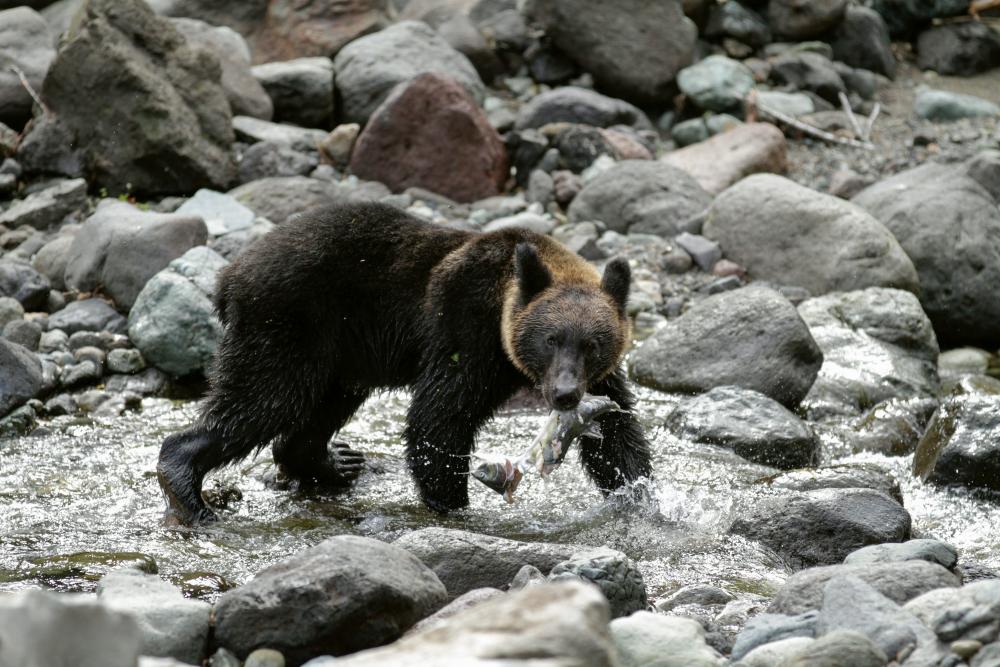Sports
Search Underway for Missing Hunter Amid Hokkaido Bear Emergency

Authorities in Japan are conducting a search for a hunter reported missing on July 4, 2023, in the mountainous region of Hokkaido. This incident coincides with a notable rise in bear attacks across the area, prompting local officials to declare a bear emergency in a nearby town. The hunter was last seen on Mt. Esan, where he was reported missing by a friend after failing to return home.
On the day the hunter went missing, a rifle believed to belong to him was discovered along a mountain road, alongside bloodstains. This area had seen a large brown bear sighted just days prior, heightening concerns for public safety.
In a tragic incident on the same day, a newspaper delivery man, Kenju Sato, aged 52, was fatally attacked by a bear in Fukushima, approximately 120 kilometers from Mt. Esan. Eyewitnesses reported hearing his cries for help as he was dragged into the bushes, where his body was later found. Efforts by neighbors to scare off the bear were unsuccessful.
In response to the increasing threat, local authorities have instituted a month-long bear emergency in Fukushima. This marks the first such declaration in the area, with police, firefighters, and local hunters conducting continuous patrols to ensure public safety. The bear involved in the Fukushima attack was reported to be around 1.5 meters in length, notably smaller than the one sighted near Mt. Esan.
The frequency of bear attacks has risen significantly in Japan, particularly on the main island of Honshu, where multiple incidents have been reported this month. On July 4, an 81-year-old woman was killed by a black bear in Iwate Prefecture. Two additional elderly women were attacked in separate incidents—one in Aomori Prefecture and another near the historic capital of Nara.
Experts attribute the surge in bear encounters to a decline in food sources, particularly acorns and beechnuts, which are vital to the bears’ diets. This decline has been linked to the ongoing climate crisis. Additionally, rural depopulation has led to more abandoned farmland, encouraging bears to venture into residential areas in search of food.
Despite a record of 219 injuries and fatalities in the previous fiscal year, serious incidents had decreased in the year leading to March 2025. This decline was likely due to an abundance of available food. Nevertheless, a recent report from the Tohoku Regional Forest Office indicates an anticipated poor harvest of beechnuts this autumn, raising concerns about potential hunger-driven bear invasions into populated areas.
Local authorities are urging residents to refrain from disposing of food waste outside their homes to avoid attracting bears. Hokkaido is home to the Ussuri brown bear, which can weigh over 500 kilograms and reach lengths of up to 3 meters. In contrast, the Asiatic black bears found in other regions of Japan are generally smaller, but still pose a significant danger to humans.
In light of the rising incidents, the Japanese government has relaxed hunting regulations. Since April, municipalities have been authorized to conduct “emergency shootings” of bears posing a threat to human life. This decision reflects a growing concern for public safety amid the increasing number of bear encounters in urban areas.
As the search for the missing hunter continues, the situation underscores the urgent need for effective wildlife management strategies to protect both residents and bear populations in Japan.
-

 Politics4 weeks ago
Politics4 weeks agoSecwepemc First Nation Seeks Aboriginal Title Over Kamloops Area
-

 World5 months ago
World5 months agoScientists Unearth Ancient Antarctic Ice to Unlock Climate Secrets
-

 Entertainment5 months ago
Entertainment5 months agoTrump and McCormick to Announce $70 Billion Energy Investments
-

 Science5 months ago
Science5 months agoFour Astronauts Return to Earth After International Space Station Mission
-

 Lifestyle5 months ago
Lifestyle5 months agoTransLink Launches Food Truck Program to Boost Revenue in Vancouver
-

 Technology3 months ago
Technology3 months agoApple Notes Enhances Functionality with Markdown Support in macOS 26
-

 Lifestyle3 months ago
Lifestyle3 months agoManitoba’s Burger Champion Shines Again Amid Dining Innovations
-

 Top Stories2 months ago
Top Stories2 months agoUrgent Update: Fatal Crash on Highway 99 Claims Life of Pitt Meadows Man
-

 Politics4 months ago
Politics4 months agoUkrainian Tennis Star Elina Svitolina Faces Death Threats Online
-

 Politics5 months ago
Politics5 months agoCarney Engages First Nations Leaders at Development Law Summit
-

 Technology5 months ago
Technology5 months agoFrosthaven Launches Early Access on July 31, 2025
-

 Top Stories1 month ago
Top Stories1 month agoFamily Remembers Beverley Rowbotham 25 Years After Murder











